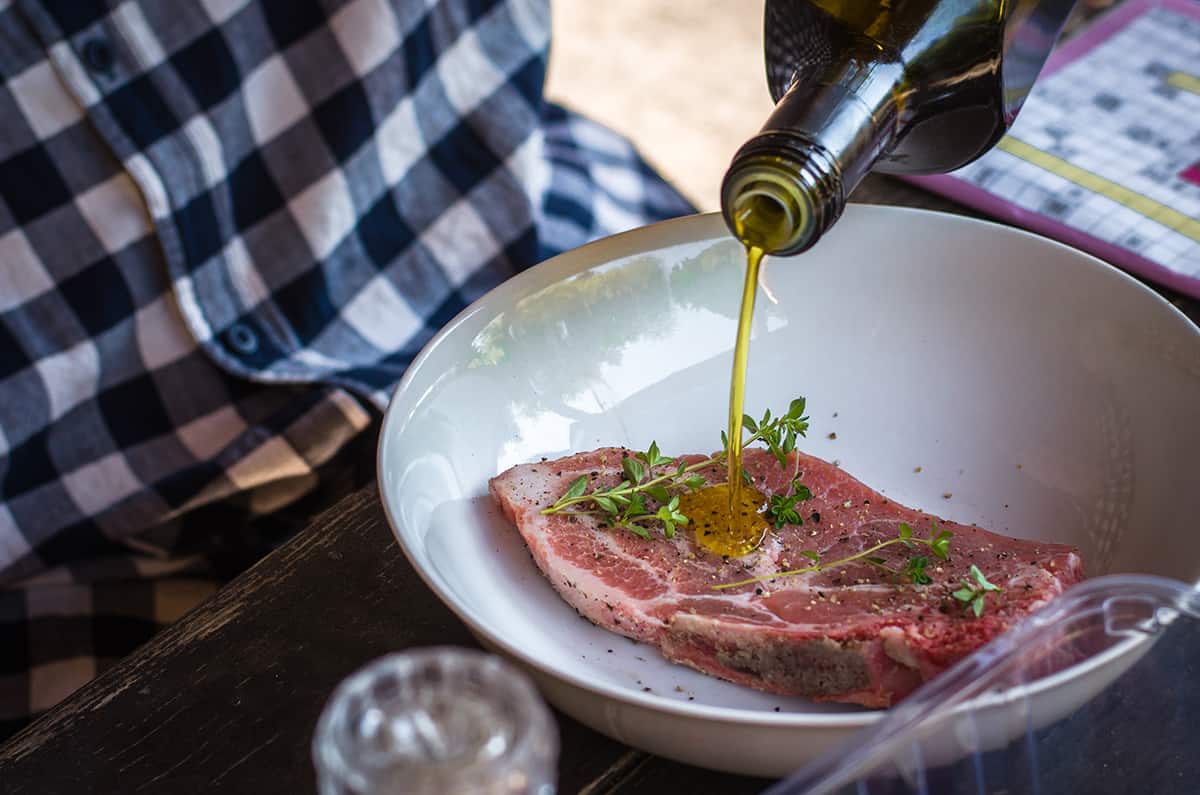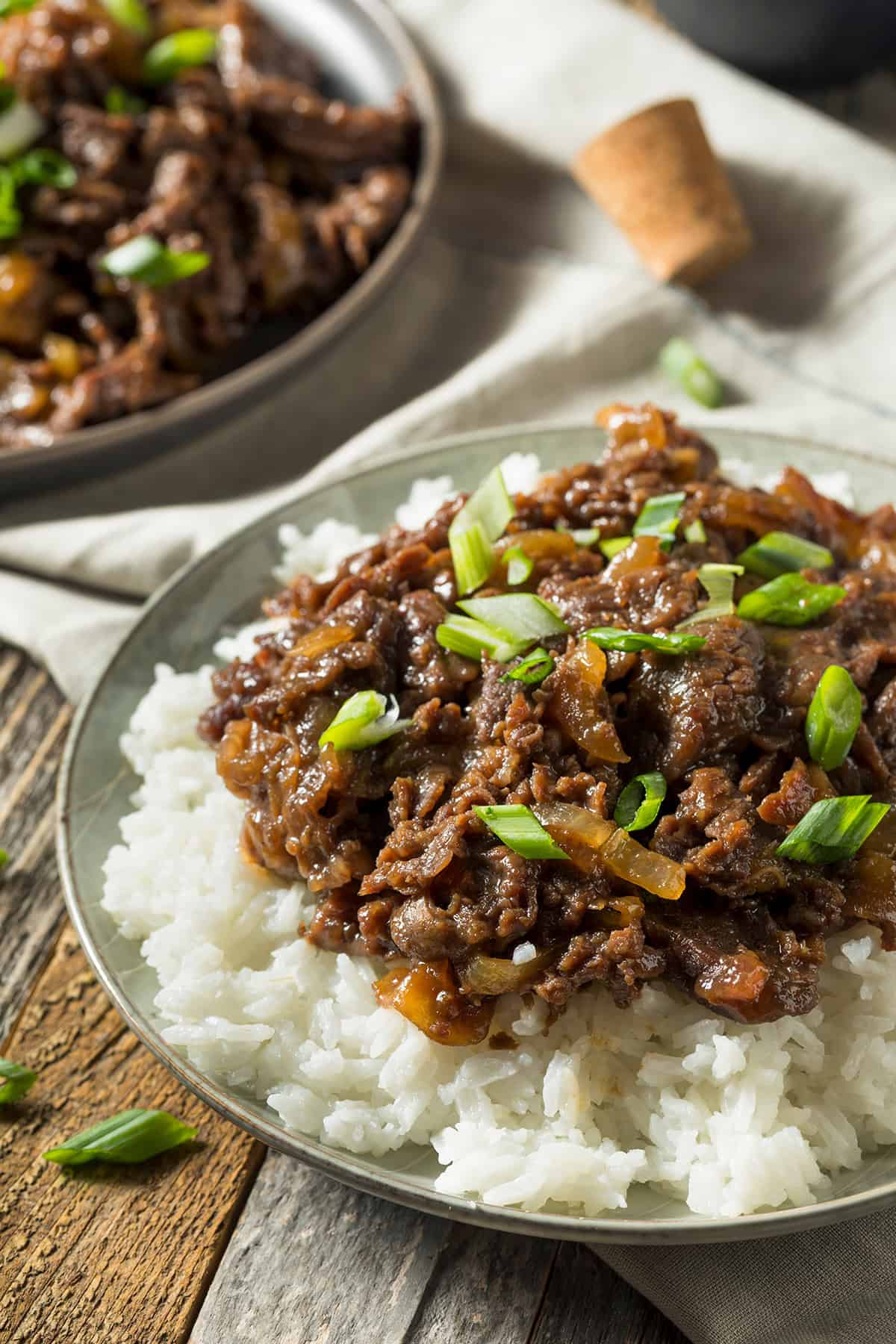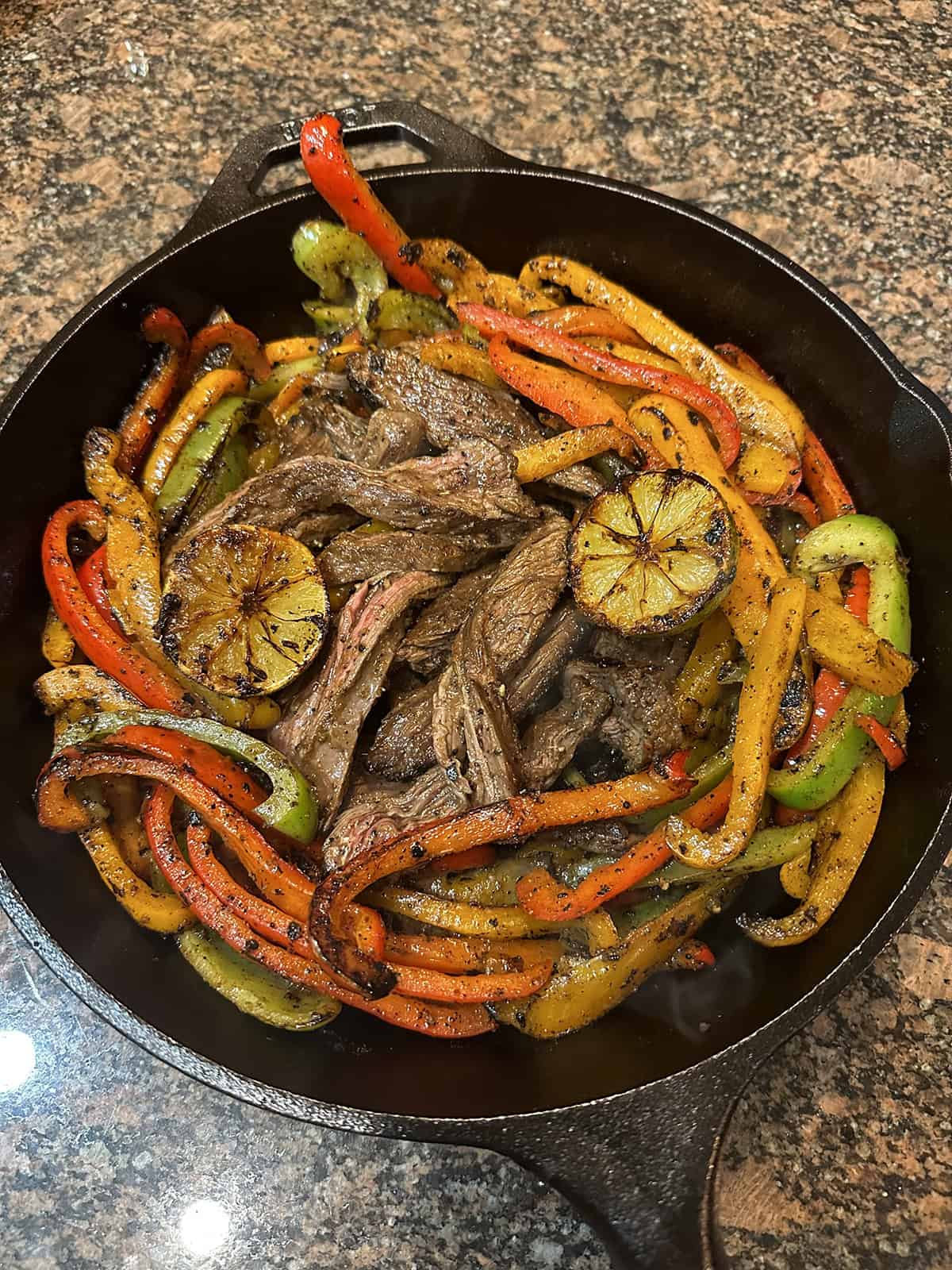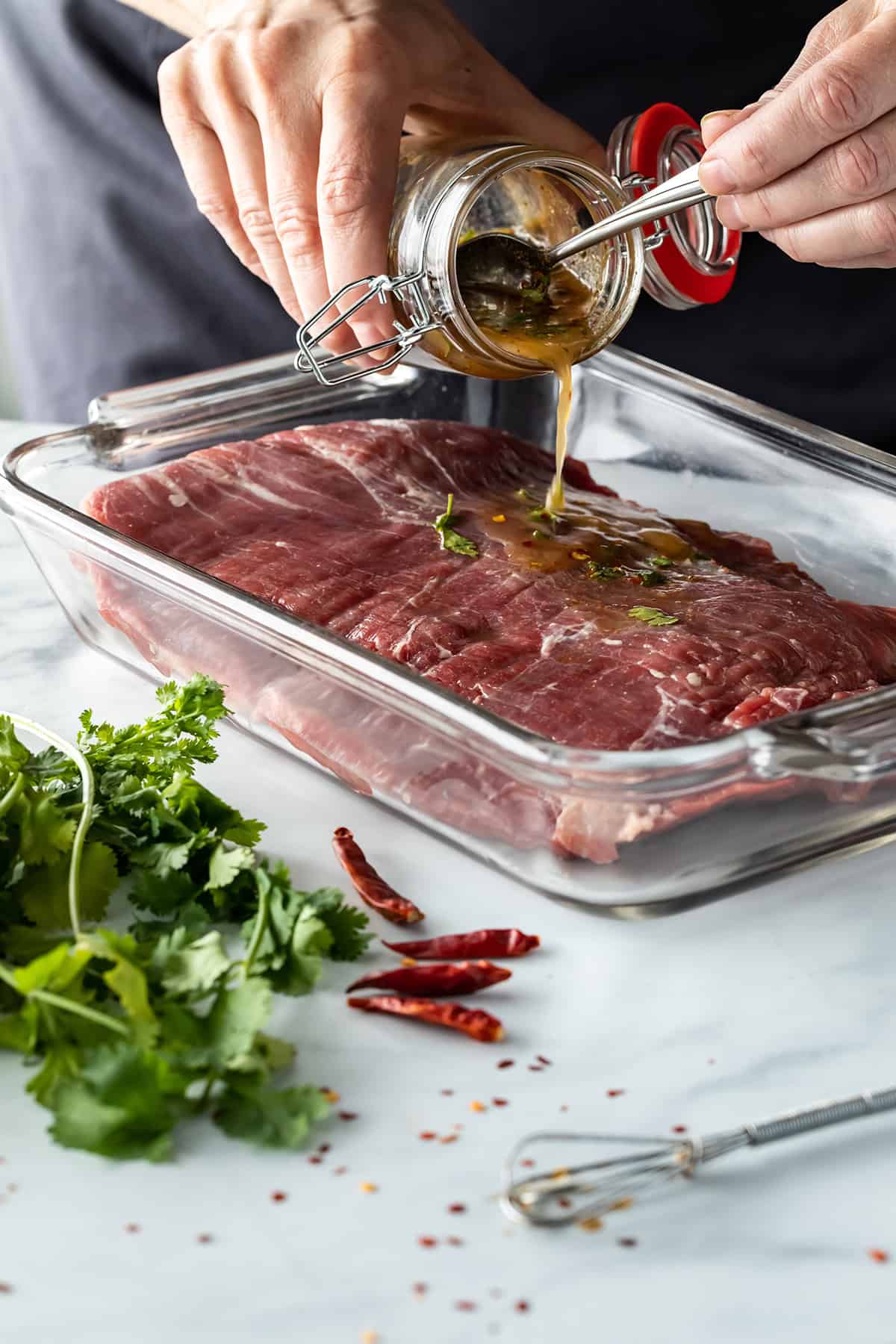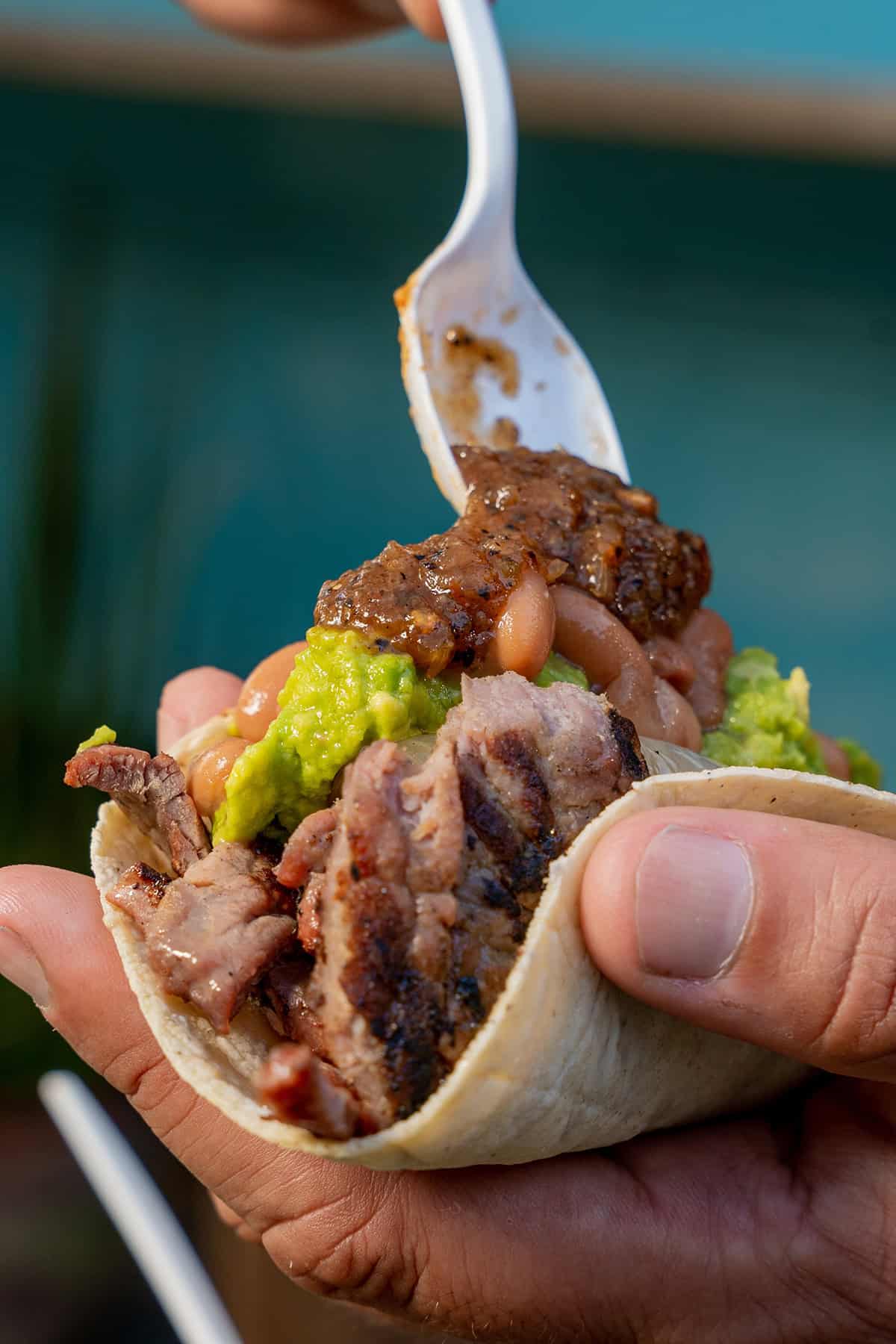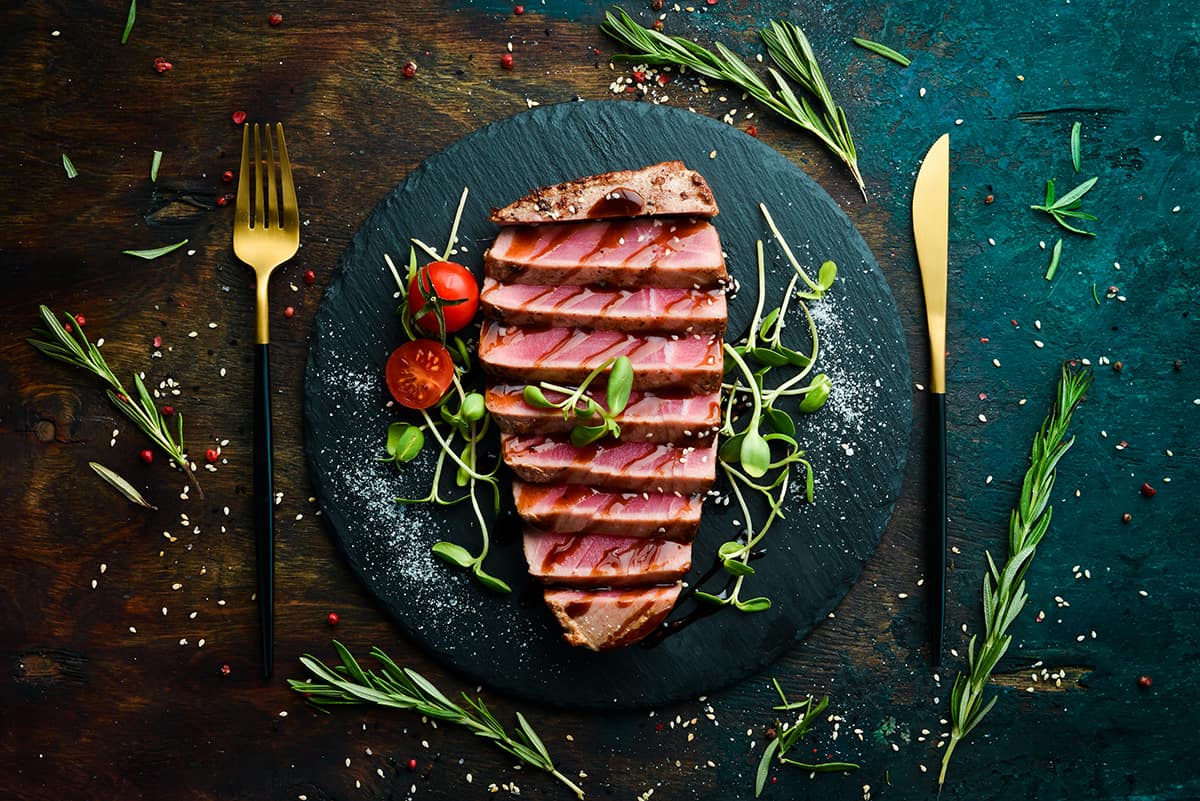Everyone has a special way to prepare the “best” grilled steak. But when it comes to choosing a grilling oil, some people might think that any of them will do. This simply isn’t true. So, what is the best oil for grilling steaks?
There are 4 types of oils that can withstand super-hot grills: vegetable oil, avocado oil, grapeseed oil, and peanut oil. Anything else will have too low a smoke point and burn in the grill before properly searing the outside of your steak.
What makes these types of oils so different from the rest? And do you even need to add oil to your steak before it hits the grill? I’ll answer these questions and more in the following sections.
What Is the Best Oil for Grilling Steak?
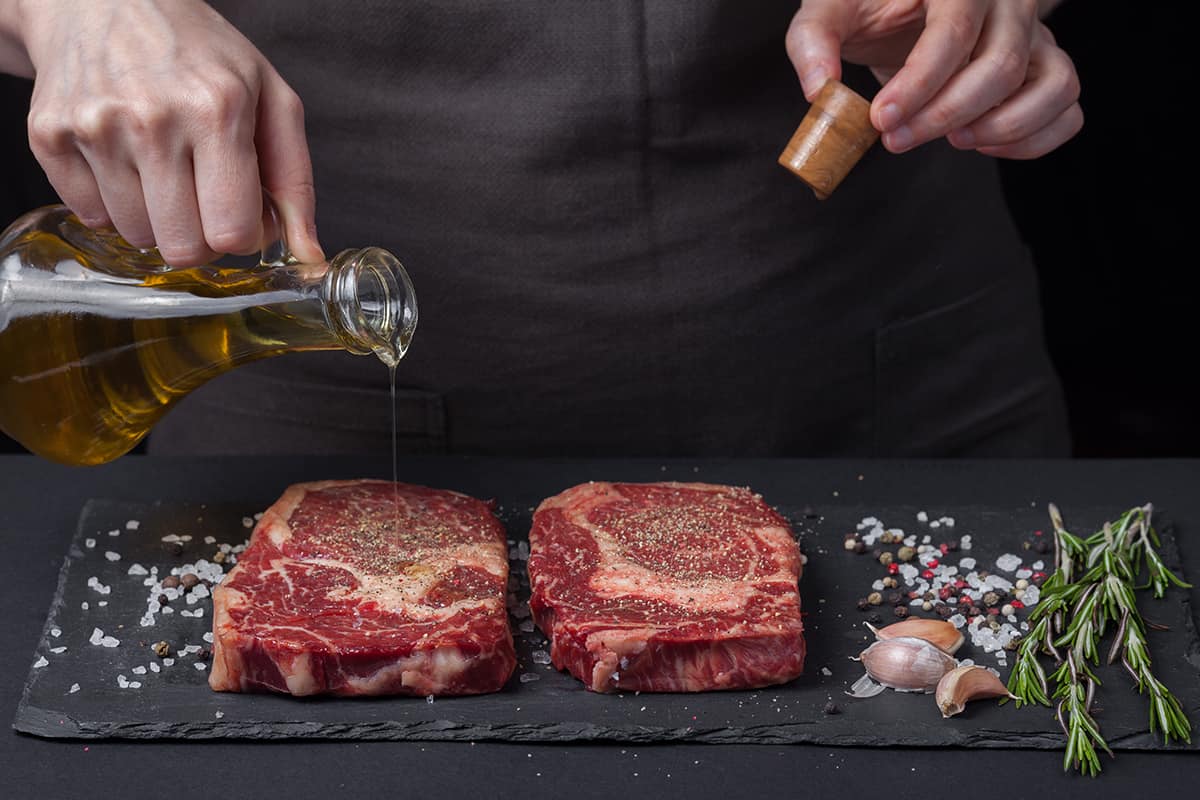
Before discussing what oil to choose for grilling steaks, let’s take a look at the fundaments—i.e., what is grilling?
Grilling is a cooking method that involves introducing dry, extreme heat to the surface of foods—in this case, steaks. When it comes to grilling, the cooking temperature can reach 450°F or higher, which will pretty much destroy anything you place on the surface of your steak, including oil.
So, as far as grilling oil goes, it should meet the following criteria:
- The oil should have a high smoke point
- The oil should have a neutral flavor
- The oil should not color the steak when heated
Of the dozens of cooking oils and fats known to man, there are 4 types that meet all of the criteria—namely, vegetable oil, canola oil, grapeseed oil, and peanut oil.
Vegetable Oil
Vegetable oil is one of the more affordable options and is available in different sub-types, such as soybean and sunflower. These oil types have smoke points of 453°F and 450°F, respectively, so they can withstand immense grilling temperatures without infusing too much flavor into the steak. Vegetable oil is considered a much healthier fat option as opposed to butter and lard.
Avocado Oil
Avocado oil is oil that has been squeezed from the fresh pulp of fleshy avocados. It has the highest smoke point of all oils at 510°F, making it ideal for super-heated grills and adding char to meats. Avocado oil is high in oleic acid and vitamin E, and it can reduce LDL cholesterol.
Grapeseed Oil
Grapeseed oil is well-known for its neutral flavor, high smoke point (420°F) and antioxidant properties. You can also use grapeseed oil as a base for salad dressing since it has a light, clean flavor.
Peanut Oil
Peanut oil is regarded as being one of the healthiest oil choices. It’s high in good fat and low in bad fat, and has been linked to lower cholesterol while boosting heart health. It’s an excellent option for grilling steaks as it does not contain any flavor and has a high smoke point (450°F).
What About Olive Oil?
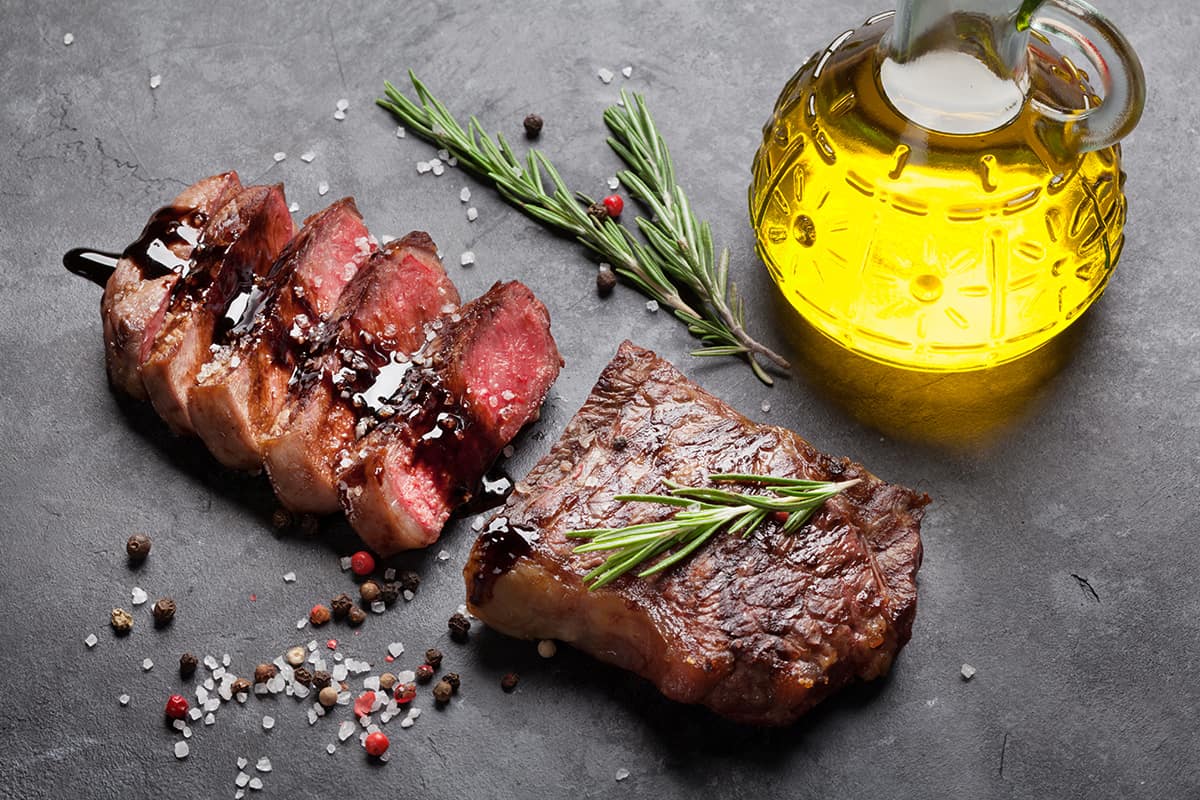
There is a reason I intentionally left olive oil out of the list above. The reason is that olive oil, while delicious, has a smoke point of around 374-405°F. This is considerably lower than the other types of oil mentioned above. So, the moment the oil hits a super-hot grill, it will begin smoking and imparting a burned flavor and odor into your steak.
Now, you might have seen chefs use olive oil when preparing steaks on YouTube or TV. The thing is that those chefs typically don’t grill their steaks. Instead, they sear the steak in a cast-iron skillet with a bit of olive oil, baste it with a “knob” of butter, “brush” it with a twig of rosemary, and finish the steak off in the oven at 375°F for 10-20 minutes.
In fact, the only time you might see someone grill a steak with olive oil is when reverse searing the steak. They will typically sous vide the steak until it has an internal temperature of 150-160°F before searing the outside on a skillet set to high heat or a grill.
Even then, the steak will sear for just a few moments, which isn’t enough time for burned olive oil to begin developing a foul taste and odor.
Can I Use Canola Oil?
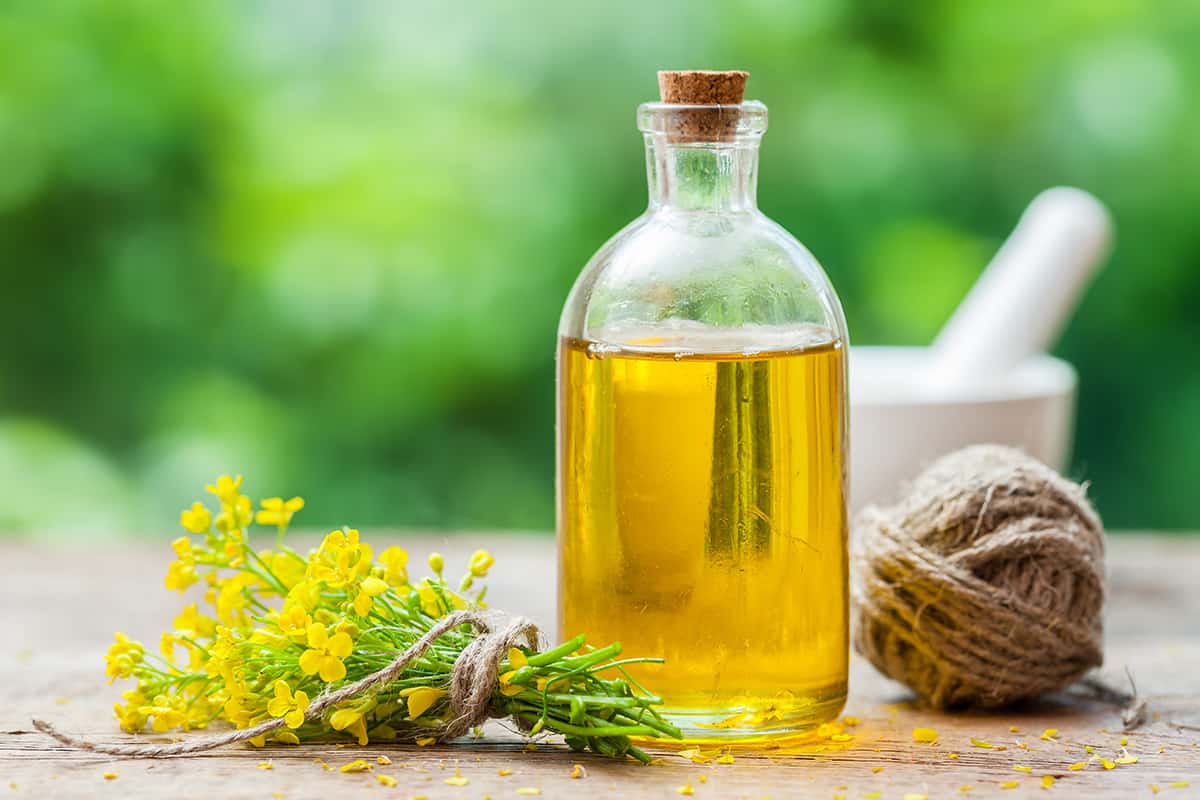
Yes, you certainly can. However, the main issue with canola oil is its lower smoke point, which is around 399°F. It has a higher smoke point than olive oil, making it more appropriate for grilling, but it might not be high enough for your grill.
That said, if canola oil is the only thing you have on hand, don’t be afraid to coat your steak in the oil before setting it on the grill. You might have to reduce the temperature of your grill to 425°F.
The downside is that it will take a bit longer for the steak to develop a delicious crust and beautiful crisscross pattern.
What Temperature Should I Grill Steaks?
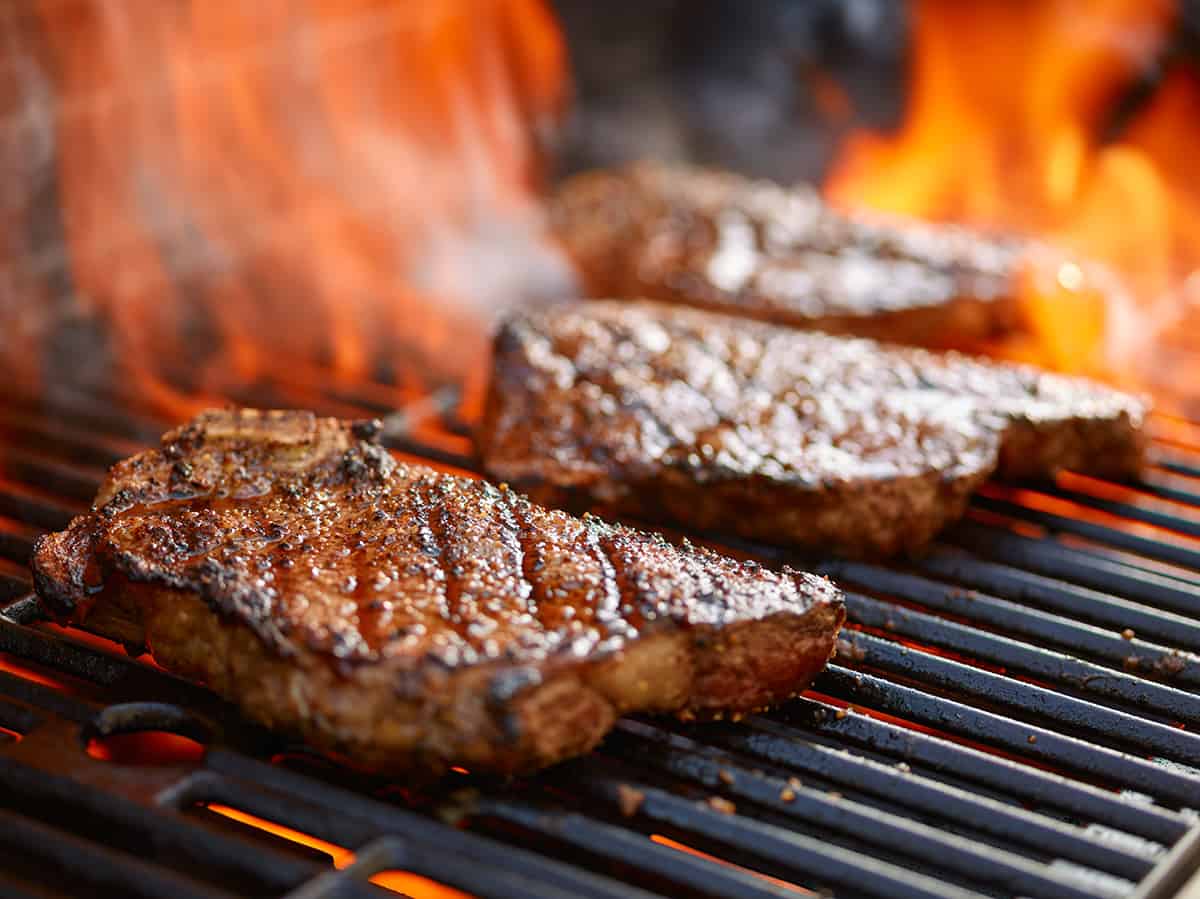
Remember: the purpose of grilling a steak is to super-heat the exterior. So, the hotter your grill, the quicker you can produce a delicious char on the outside of the cut of meat. Most people will grill steaks at 450-500°F, depending on the type of oil they have on hand. Only by doing at such temperature will the grates be hot enough to “brand” your steak with the darkened lines that make a steak look and taste better.
You should always choose an oil with the highest smoke point as it will allow you to crank your grill to a high setting and produce a quick char on your meat.
If all you have is an oil with a lower smoke point—e.g., olive oil—then you will have to reduce the heat of your grill to stop it from burning. Doing so will increase how long your steak spends in the grill before developing a crisscross char pattern, which may lead to a tough steak.
However, some people might grill their meats to finish the cooking process. For instance, they will start the steak in a cast-iron skillet to develop a crust before transferring it to a grill.
If you use a grill to finish the cooking process, you should move the steak from direct heat to indirect heat (moving it to a colder part of your grill). That way, only the ambient air inside the grill will cause the interior to cook without over-charring the exterior.
Do I Need Oil to Grill Steaks?
While it’s recommended that you lightly coat your steaks for the grill, it’s not 100% necessary. In fact, if you prefer a more natural look and feel to your steak, then you should avoid adding fats to the steak and enjoy the rendered fat from within.
However, there are a few reasons why you should consider oiling your steaks before they hit the grill. When your steak touches the surface of a super-heated grate, it will begin searing immediately.
You can quicken the searing process by coating the steak in a generous amount of oil. In addition, the oil will stop your steak from sticking to the grate when you remove it before the char has time to develop.
Do I Need to Marinade Grilled Steaks?
You can certainly drop your steak in a marinade for 24 hours before placing it on a grill, but there are a few things you should know.
The purpose of the marinade is to infuse the steak with flavor that the meat does not have naturally. This is a popular prepping method when trying out Asian-inspired recipes. Some of the more popular marinade ingredients include soy sauce, apple cider vinegar, maple syrup, and oil.
So, if you want to marinade your steak before slapping it on the grill, make sure the oil has a high smoke temperature. Take a look at the previous sections to see which kinds of oil fulfill this criterion.
The drawback of grilling marinated meats is that the extra moisture can prevent the steak from developing a crust and sear. What will end up happening is that moisture will leak out and, upon contact with your grill, slightly boil the steak.
Basically, if you’re considering marinading your steak, you have to choose between texture and flavor. However, if you want the best of both worlds, pat the marinaded steak with a paper towel until it’s as dry as humanly possible before placing it on the grill.
How Long Should I Grill Steaks?
If you’re grilling steaks to create a crispy exterior, set your grill to at least 450°F and sear your steak for 1-2 minutes on each side. This is assuming that your steak is cooked to perfection on the inside.
However, if you’re finishing the cooking process on the grill, it can take around 10-12 minutes on each side over indirect heat for the steak to fully cook.
